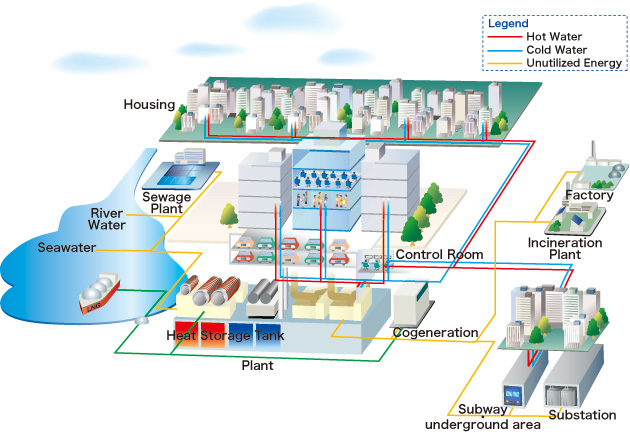District Heating and Cooling
- ホーム
- English HOME
- Overview
- Conceptual Diagram
Conceptual Diagram
Click the image to see the enlarged image.
Heat Source
In addition to conventional energy sources such as gas, electricity, petroleum and coal, DHC systems can utilize various sources of waste heat energy throughout the city. These include heat drawn up from water in rivers and sewers, and heat given off by incineration plants and underground high-voltage power cables.
Energy Plant
The energy plant is a centralized facility that uses boilers, chillers, heat pumps and other equipment to produce chilled water and hot water (steam), which are used as energy source to heat and cool the entire district. Controlling the production of heat in such a centralized manner allows thermal energy to be utilized at a high degree of efficiency.
Pipeline System
The pipeline system, either buried underground or contained within common utility conduits, transports chilled water and hot water (steam) from the energy plant to the buildings throughout the district.
Consumers
Since consumers can heat and cool their buildings using the chilled water and hot water (steam) supplied through the pipeline system, they do not need to have their own heat source system.

